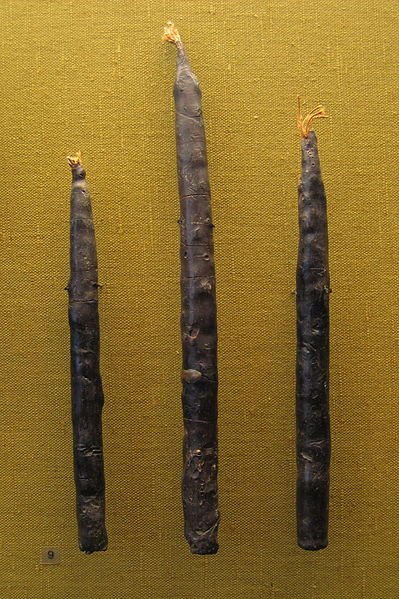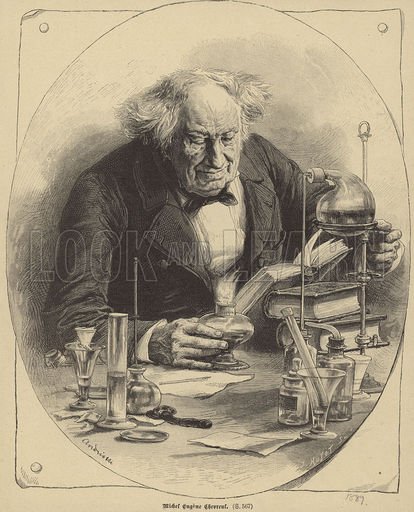Where did candles come from? : The origin and evolution of candles

Being used today as mere adornment or only in special occasions, candles were one of our main modes of lighting before the appearance of electricity and had even more rudimentary predecessors.
Paintings found in caves, estimated to have been made about 50,000 BC, show that at that time, light was provided by vessels with animal fat in the liquid state, in which plant fibers were used as wicks.
The first references to candles date back to the 19th century BC and are referred to in Biblical texts. Those candles were nothing more than simple reeds besieged with tallow. Archaeological discoveries found bat-shaped sails in Egypt and Greece. For the Greeks, the candles symbolized the moonlight and it was found that in Greece, candles were used on the 6th day of each month as worship of Artemis, the Greek goddess of hunting. There is evidence of candles being made in china and India in 200 B.C. The Indians used the beeswax at that time. The Chinese candles were made of whale fat during the Qin Dynasty – and they learned to make candles out of beeswax around 40 B.C. The Chinese people used to make an interesting type of candle during the first century by means of a fish called “eulachon” AKA, “Candlefish”.

Eulachon (candlefish) - sourceAfter the fall of the Roman empire, the most commonly used lamp fuel in the Europe, olive-oil became hard to get throughout the continent, due to the trading disruptions. As a result, candles began to be used more commonly. However, the Middle Eastern and North Africans wouldn’t have known the use of candles for they still had an adequate supply of olive oil for lightning their lamps.
By the Middle Ages, the candles lit churches, monasteries and halls. The clergy advised the use of white candles to drive away the witches and the farmers used the sacred candles to protect their flocks at that time. The most common material at that time to make candles was the tallow of animals. This had the disadvantage of creating lots of smoke and having a rather unpleasant smell. The option they had was candles made of beeswax; only in that case the problem was that the amount of wax was not enough to respond to the demand.

Tallow fat candles - sourceNevertheless, in Europe, the candles were considered as luxury objects; they were manufactured in the cities by skilled craftsmen and sold at a high price regardless of the material being tallow or wax. They were placed in sconces of wood or silver. Despite its price and meeting the obvious need, it was quickly seen as a stable and clearly profitable business. In Paris alone, in the year 1292, 71 candle makers were counted.

Three bees wax candles found at the Alamannic gravyard of Oberflacht, Seitingen-Oberflacht, Kreis Tuttlingen, Germany. Dating to 6th or beginning 7th century A.D. They are the oldest survived bees wax candles north of the Alps. Dimensions from left to right (wikipedia) - source The 16th century marks the time of the creation of different types of supports and candlesticks at lower prices and with that the candles were sold based on the weight or in group.
As the light emitted by the candles depended on the material of which it was made, and since wax produced brighter light, in England there was a preference for manufacturers of wax candles compared to those of tallow, despite their higher price.
With the arrival of gas lighting in the 19th century, the use of candles for lightning purpose was decreasing. But the poorest sections of the population still did not have access to the gas, so the machinery for the production of candles for those families were developed.
In the field of research, in 1811, the French chemist Michel Eugene Chevreul discovered that the tallow was not unique but composed of two fatty acids linked to glycerine. He then decided to remove the glycerin from the sebum by creating the "stearin", harder, slower to burn and giving a brighter light. With this discovery the quality of the candles improved substantially, and also helped the wicks also to be improved. By 1825, the wicks were no longer made of cotton but were made of rolled wire, which gave a better uniformity to the flame.

Michel Eugene Chevreul - sourceWith the oil rush in 1830, the most well-known derivative of the composition of the current candles, paraffin, appeared. In 1854, it was combined with stearine and the base elements for the production of candles were conjugated like the ones we still use today.
A couple of nteresting facts about candles:
- The ancient people believed that the candle flame, when observed fixedly, allowed to see gods and spirits or even to foresee the future.
- The candles were used to measure time, due to their cadenced combustion, knowing that the Chinese dynasty Song used "clocks" of candles.
If you’ve enjoyed my article, please let me know through Upvote and Comment.
For more informative and entertaining contents about history, art, and mystery-
Follow me here : @tamurah
Keep Living---keep Loving---Keep steeming
Have a nice day

courtesy: wikipedia || historyoflighting.net || candles.org